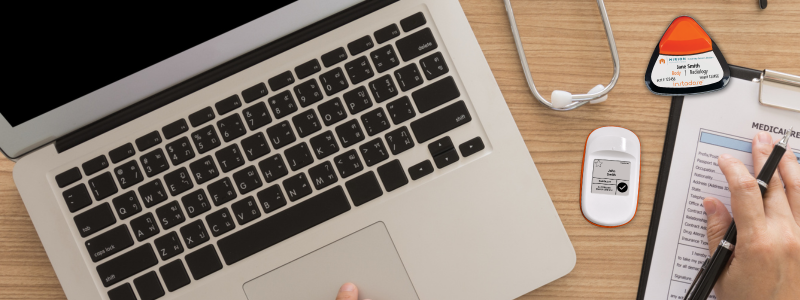Case Studies in Dosimetry: Real-World Applications and Success Stories

Exploring the practical applications of dosimetry reveals its profound impact across various sectors. This blog delves into real-world case studies, showcasing the transformative role of dosimetry in radiation safety and monitoring.
1. Biological Dosimetry in Occupational Overexposure
In a notable instance in Portugal, biological dosimetry was employed to confirm a radiologist's suspected occupational overexposure to ionizing radiation. This study validated the readings of the radiologist's thermoluminescent dosimeter using the dicentric assay. The biological dosimetry confirmed that the radiologist had indeed been exposed to an accidental dose of ionizing radiation, leading to a five-year professional radiation exposure exclusion. This case underscores the critical role of dosimetry in occupational health and safety, particularly in accurately assessing and responding to overexposure incidents.1
2. Individual Dosimetry Data in Fukushima
The D-Shuttle project, initiated after the Fukushima Daiichi Nuclear Power Plant accident, involved residents wearing personal dosimeters to measure their radiation exposure. The results showed variations in individual radiation exposure levels, emphasizing the need for individualized monitoring in disaster response scenarios. This case study highlights the vital role of personal dosimetry in public health and safety during nuclear incidents and radioactive emergencies.2
3. Real-Time Dosimetry in Coronary Procedures
The ESPRESSO-Raysafe trial examined the effectiveness of real-time X-ray dosimetry monitors in coronary procedures. The study found that the use of these monitors significantly reduced patient radiation exposure and fluoroscopy time. Specifically, there was a notable reduction in the mean fluoroscopy time and dose-area product, with patient exposure being significantly lower in the group using the real-time monitor. Although there was no statistically significant reduction in radiation exposure for the first operator and assistant operator, this trial demonstrates the potential of real-time dosimetry monitoring to enhance patient safety in medical settings by reducing unnecessary radiation exposure.3
These case studies highlight the critical role of dosimetry in enhancing safety and efficacy in diverse fields, including healthcare and disaster response situations. The evolving nature of dosimetry continues to offer innovative solutions for managing the invisible risks of radiation.
References
- Monteiro Gil, O., Martins, J. O., & Rosário, P. (2020). Use of biological dosimetry to confirm radiation exposure: Case study. Radiation Physics and Chemistry, 108683. https://doi.org/10.1016/j.radphyschem.2020.108683
- Miyazaki, M. (2021). Using and explaining individual dosimetry data: Case study of four municipalities in Fukushima. Tropical Medicine and Health, 29(2_suppl), 1010539517693082. https://doi.org/10.1177/1010539517693082
- Olschewski, M., Ullrich, H., Brandt, M., Steven, S., Ahoopai, M., Blessing, R., Petrescu, A., Wenzel, P., Munzel, T., & Gori, T. (2021). Effectiveness of a real-time X-ray dosimetry monitor in reducing radiation exposure in coronary procedures: The ESPRESSO-Raysafe randomized trial. Journal of Clinical Medicine, 10(22), 5350. https://doi.org/10.3390/jcm10225350